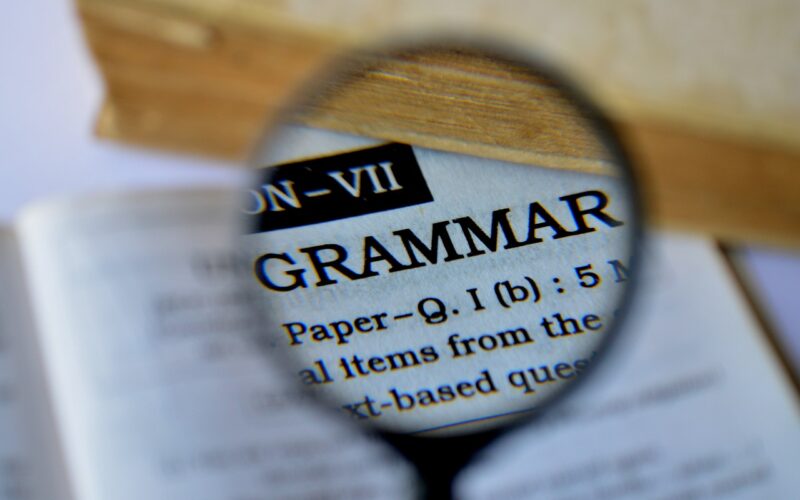STUDYING ENGLISH PREPOSITIONS


A preposition is a part of speech that shows the relationship between a noun or pronoun and other words in a sentence. Prepositions are used to indicate location, direction, time, manner, cause, purpose, and more. They help provide context and clarify the relationships between different elements in a sentence. English prepositions can be tricky to learn, especially the prepositions of time and place. This page offers clear explanations and examples to help you master these important parts of English grammar. So let’s explore prepositions further to help you understand their usage.
Location Prepositions:
Location prepositions indicate where something is located. Examples include “in,” “on,” “at,” “under,” “over,” “beside,” and “behind.” For instance, in the sentence “The book is on the table,” the preposition “on” indicates the location of the book.
Direction Prepositions:
Direction prepositions indicate the movement or direction of something. Examples include “to,” “from,” “into,” “out of,” “through,” and “across.” For example, in the sentence “She walked to the park,” the preposition “to” shows the direction of her movement.
Time Prepositions:
Time prepositions indicate when something happens. Examples include “at,” “on,” “in,” “before,” “after,” “during,” and “since.” In the sentence “I have a meeting at 3 p.m.,” the preposition “at” specifies the time of the meeting.
Manner Prepositions:
Manner prepositions indicate how something is done or the way in which an action is performed. Examples include “with,” “by,” “like,” and “as.” For instance, in the sentence “He painted the picture with a brush,” the preposition “with” describes the tool used to paint.
Cause Prepositions:
Cause prepositions indicate the reason or cause behind an action. Examples include “because of,” “due to,” and “owing to.” In the sentence “The match was canceled due to rain,” the preposition phrase “due to” explains the cause of the match cancellation.
Purpose Prepositions:
Purpose prepositions indicate the reason or purpose for an action. Examples include “for,” “to,” and “in order to.” For example, in the sentence “She studied hard for the exam,” the preposition “for” indicates the purpose of her studying.
Agent Prepositions:
Agent prepositions indicate the doer of an action in a passive sentence. The most common agent preposition is “by.” For instance, in the sentence “The book was written by Mark Twain,” the preposition “by” introduces the author of the book.
Possessive Prepositions:
Possessive prepositions indicate ownership or possession. Examples include “of,” “from,” and “with.” In the sentence “The keys of the car are missing,” the preposition “of” shows the relationship between the keys and the car.
Partitive Prepositions:
Partitive prepositions indicate a part of a whole. Examples include “of” and “out of.” For example, in the sentence “She ate a piece of cake,” the preposition “of” indicates that she consumed a portion of the cake.
Instrumental Prepositions:
Instrumental prepositions indicate the instrument or means used to accomplish an action. Examples include “with” and “by.” In the sentence “He cut the paper with scissors,” the preposition “with” indicates the instrument used for cutting.
Prepositions are versatile words that help us provide more precise and detailed information in our sentences. By understanding their usage and the relationships they convey, we can construct clearer and more meaningful expressions. So, let’s embrace the power of prepositions in our language!
exercise on prepositions:
Instructions: Choose the correct preposition in each sentence to complete it accurately.
- The cat is sitting __ the roof.
a) on
b) in
c) at - I will meet you __ the park.
a) at
b) in
c) on - She ran __ the street to catch the bus.
a) through
b) across
c) between - The restaurant is __ the corner of the street.
a) at
b) on
c) in
5. They are going on vacation __ July.
a) at
b) on
c) in
6. The book is __ the shelf.
a) on
b) in
c) at
7. We went for a walk __ the beach.
a) at
b) on
c) by
8. The birthday party is __ 6 p.m.
a) at
b) on
c) in
9.She lives __ a small town.
a) at
b) in
c) on
10. The pen is __ the desk.
a) on
b) in
c) at
11. They traveled __ plane.
a) on
b) by
c) in
12. The keys are __ the table.
a) on
b) in
c) at
13. The students are studying __ the library.
a) at
b) in
c) on
14. The cat jumped __ the fence.
a) through
b) across
c) over
15.She arrived __ the office late.
a) at
b) on
c) in
16.They sat __ the front row.
a) at
b) in
c) on
17. The painting is hanging __ the wall.
a) on
b) in
c) at
18. I went __ the store to buy some groceries.
a) to
b) at
c) in
19.The bus stopped __ the bus stop.
a) at
b) on
c) by
20. The cat is hiding __ the bed.
a) under
b) over
c) between
Answers:
- a) on
- a) at
- b) across
- c) in
- b) on
- a) on
- a) at
- a) at
- b) in
- a) on
- b) by
- a) on
- b) in
- c) over
- a) at
- b) in
- a) on
- a) to
- a) at
- a) under
Feel free to use this exercise to test your understanding of prepositions! Here is a link to a related article “The 8 PARTS OF SPEECH | English Grammar.



